Embark on the ultimate adventure that combines raw natural beauty with heart-pounding excitement—rafting through the Grand Canyon. Often described as a once-in-a-lifetime experience, rafting down the Colorado River offers an unrivaled perspective of the Grand Canyon’s majestic depths, towering cliffs, and dynamic waters. This journey isn’t just a passive sightseeing tour; it’s an immersive adventure where each bend of the river reveals new wonders and challenges. From the exhilarating rapids to the peaceful floats, the experience allows adventurers to connect with nature in its most primal form.
While Grand Canyon Adventures (GCA) does not directly offer rafting excursions, we understand the allure of this extraordinary experience and are committed to providing thorough, expert knowledge to help you navigate the complexities and joys of Colorado River rafting in the Grand Canyon. Whether you’re a seasoned rafter or a curious newcomer, this guide aims to equip you with all you need to know to prepare for and fully enjoy every moment of your Grand Canyon rafting adventure. Join us as we dive into the details of what makes this journey not just a trip, but a transformational encounter with one of the world’s most awe-inspiring landscapes.
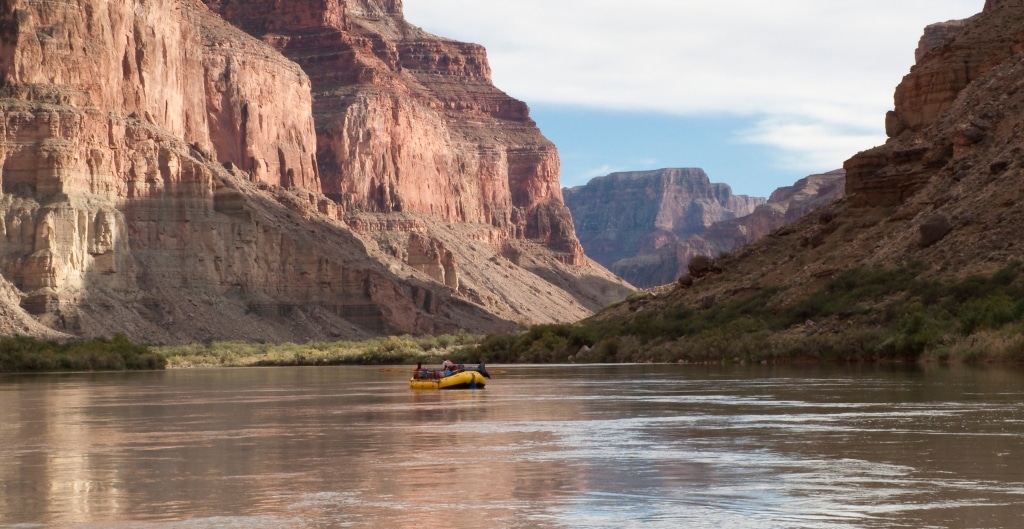
Rafting the Grand Canyon offers more than just an outdoor adventure. It provides a profound connection with one of the planet’s most awe-inspiring natural wonders. This unique experience allows you to intimately explore the heart of the Grand Canyon, something that few activities can offer. As you navigate the mighty Colorado River, each twist and turn offers a new perspective of the canyon’s vast, rugged beauty that is often hidden from the typical viewpoints above
Breathtaking Scenery: The journey through the Grand Canyon by raft opens up a world of extraordinary landscapes that vary from towering, dramatic cliffs to expansive vistas. The ever-changing light paints the ancient rock walls in hues of red, orange, and gold, creating a visual spectacle that evolves by the hour. As you float along the river, you’ll witness the canyon’s grandeur through one of the best ways to see the Grand Canyon, surrounded by its towering walls and expansive skies.
Diverse Wildlife: The river’s ecosystem is a corridor of life amidst the desert. Rafters often spot a variety of wildlife, including bighorn sheep delicately navigating the rocky banks, mighty California condors overhead, and playful ringtail cats. The more secluded stretches of the river provide opportunities to see animals in their natural habitats, often undisturbed by human presence.
Sense of Adventure & Accomplishment: Completing a rafting trip through the Grand Canyon is not only an exhilarating adventure but also a significant accomplishment. This journey challenges both the body and the spirit, testing your endurance and offering moments of introspective solitude against the backdrop of one of our planet’s most dramatic landscapes. For many, it’s a bucket-list experience that symbolizes personal achievement and the triumph of spirit over adversity.
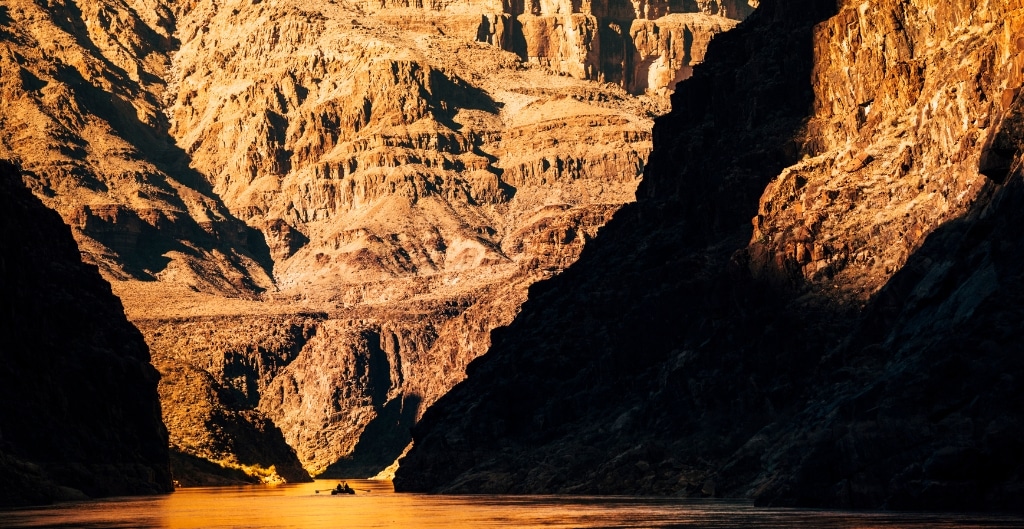
Embarking on a rafting journey through the Grand Canyon is an exhilarating experience that requires careful planning and consideration. Understanding the best time to go, securing the necessary permits, and choosing the right guide are all crucial steps in ensuring your adventure is both safe and enjoyable.
Optimal Seasons: The rafting season in the Grand Canyon typically runs from April through October, with each month offering a unique experience. Spring months (April to June) often have cooler temperatures and higher water levels due to snowmelt, making the rapids more challenging and exciting. The summer months (July to September) are hotter but offer more stable water levels, which can be better for less experienced rafters. Early fall (October) is ideal for those looking for a quieter experience with mild weather.
Weather Considerations and Water Levels: Weather in the Grand Canyon can vary dramatically depending on the season and elevation. Temperatures at the river level can be much higher than at the rim. Summer temperatures at the bottom of the Grand Canyon can soar above 115 degrees Fahrenheit, making adequate hydration and sun protection critical. Water levels in the Colorado River are largely controlled by dam releases, and they can affect the rapids’ intensity and the difficulty of the navigation.
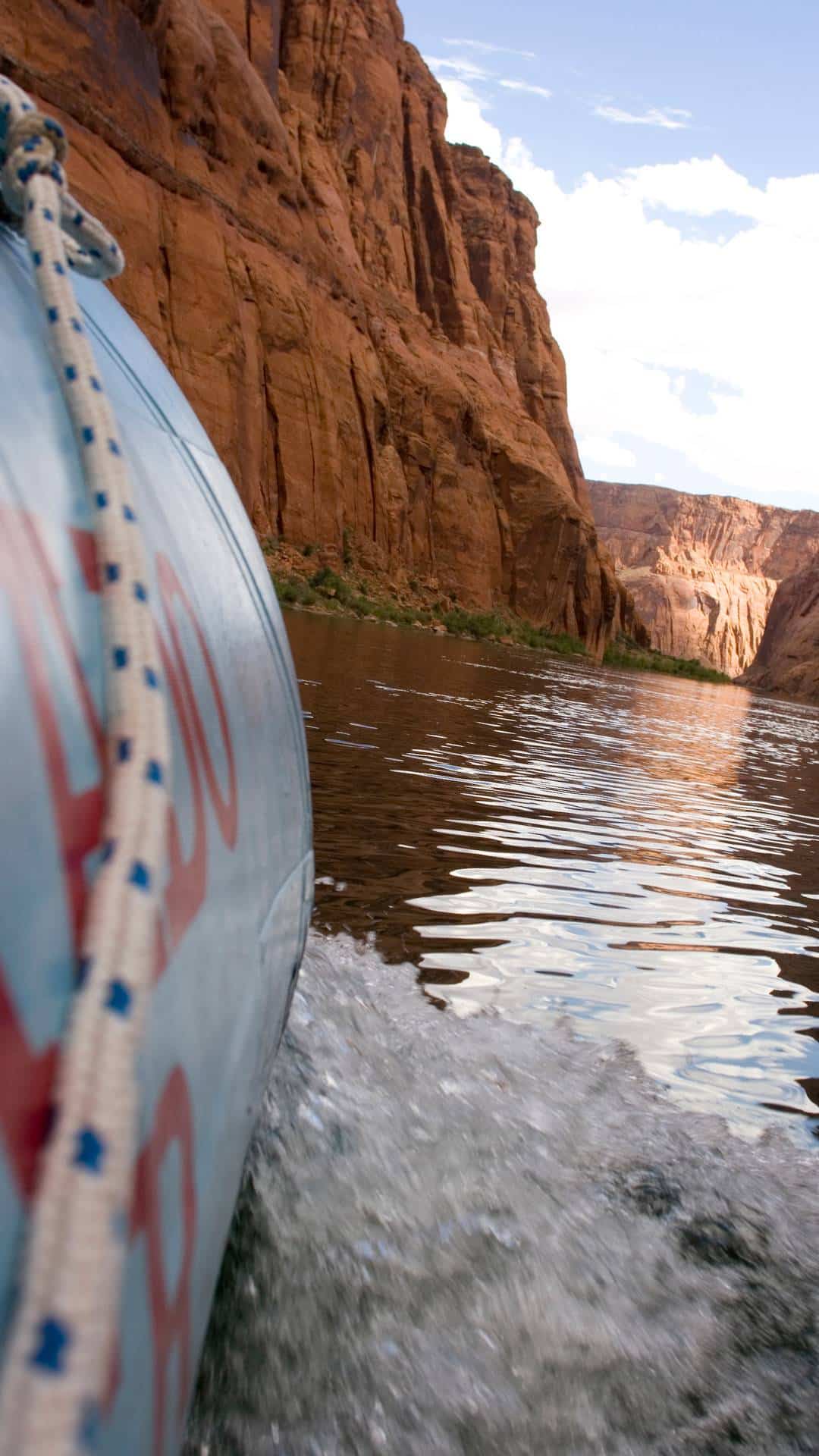
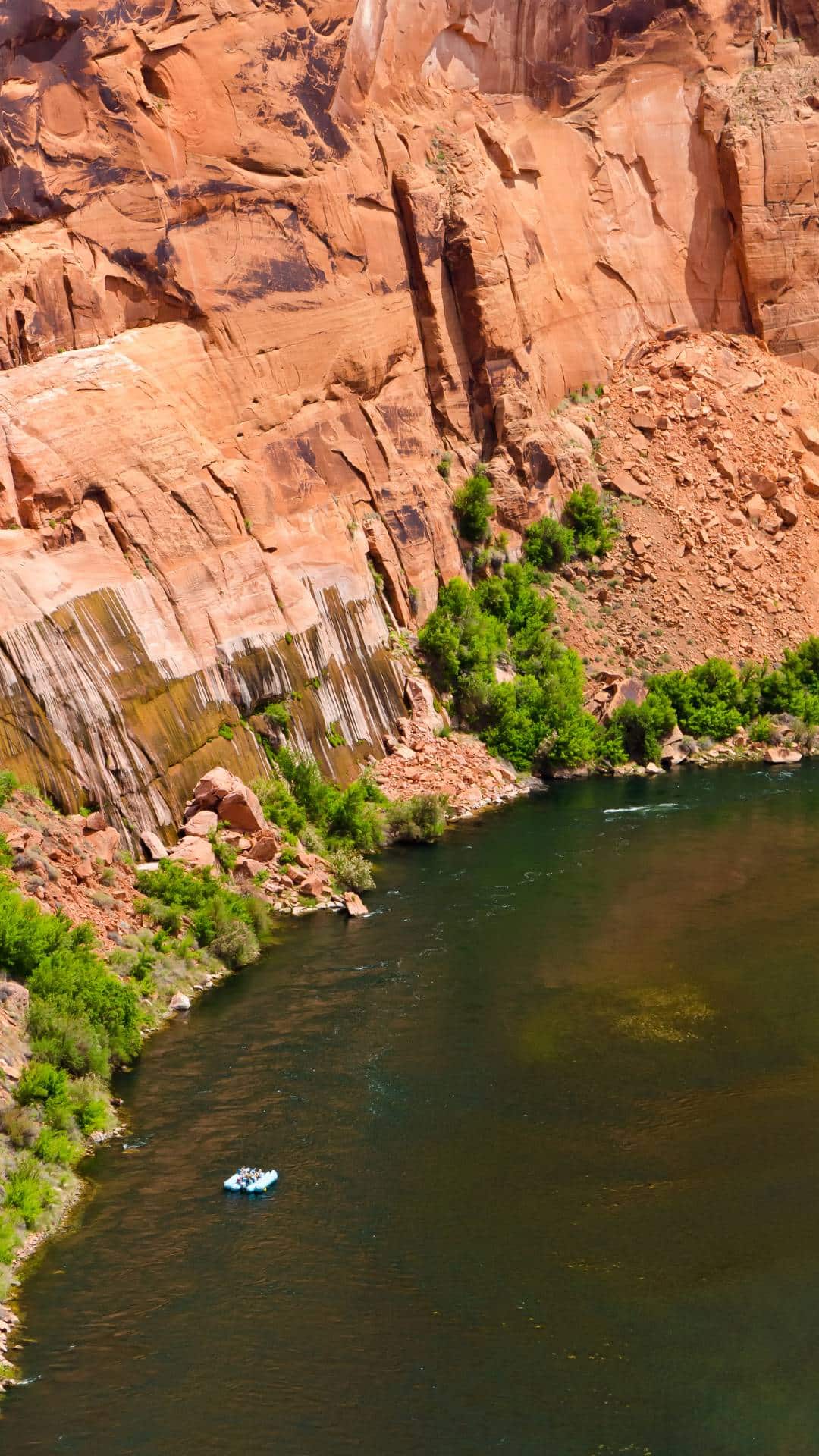
Obtaining Permits: Due to the popularity and environmental sensitivity of the Grand Canyon, all private rafting trips require a permit from the National Park Service. These Grand Canyon whitewater rafting permits are highly competitive and are often distributed through a lottery system months in advance. It’s crucial to plan early and understand all the requirements and deadlines associated with obtaining a permit.
Regulations to Be Aware Of: Colorado River Rafting in the Grand Canyon is governed by strict regulations designed to protect the natural environment and ensure the safety of all visitors. These include limits on the number of people per trip, restrictions on camping locations, and specific equipment requirements. Familiarizing yourself with these regulations is essential for a compliant and safe rafting experience.
Selecting a Reputable Rafting Company: Given the complexities and challenges of rafting the Grand Canyon, going with a professional outfitter is highly recommended, especially for those without extensive rafting experience. Look for companies with strong safety records, skilled guides, and good reviews from past clients.
Key Factors to Consider: When selecting a rafting outfitter, consider their safety protocols, the experience and qualifications of their guides, and the quality of their equipment. It’s also worth looking into the types of tours they offer—some may specialize in high-adventure trips, while others might focus on more relaxed, family-friendly journeys.
Pro Tip: Lucky for you, there’s a free service that can help you find your ideal trip. For a comprehensive and hassle-free experience, Advantage Grand Canyon offers access to all 16 commercial outfitters in one place. They can provide a customized list of trips with real-time availability based on your preferences, ensuring you find the perfect trip. You can also explore all commercial raft trips using their Trip Finder search engine.
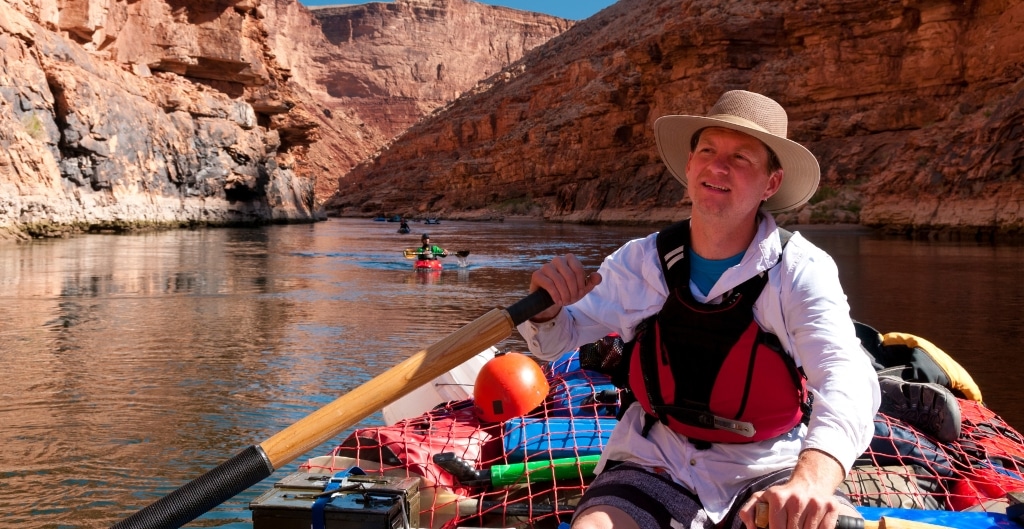
White water rafting the Colorado River through the Grand Canyon presents a variety of choices, each offering its own unique experience. Whether you opt for the thrill of controlling your own journey or the relaxation of a motorized tour, understanding the different types of rafting trips can help you choose the best fit for your adventure level and interests.
What’s the Difference? Motorized rafts are equipped with engines, allowing them to travel faster against the current and cover more distance in less time. This option is ideal for those looking to explore as much of the canyon as possible or who have limited time. Oar-powered trips, on the other hand, are propelled solely by the physical effort of the raft guide using oars. These trips offer a more traditional and intimate rafting experience.
Pros and Cons:
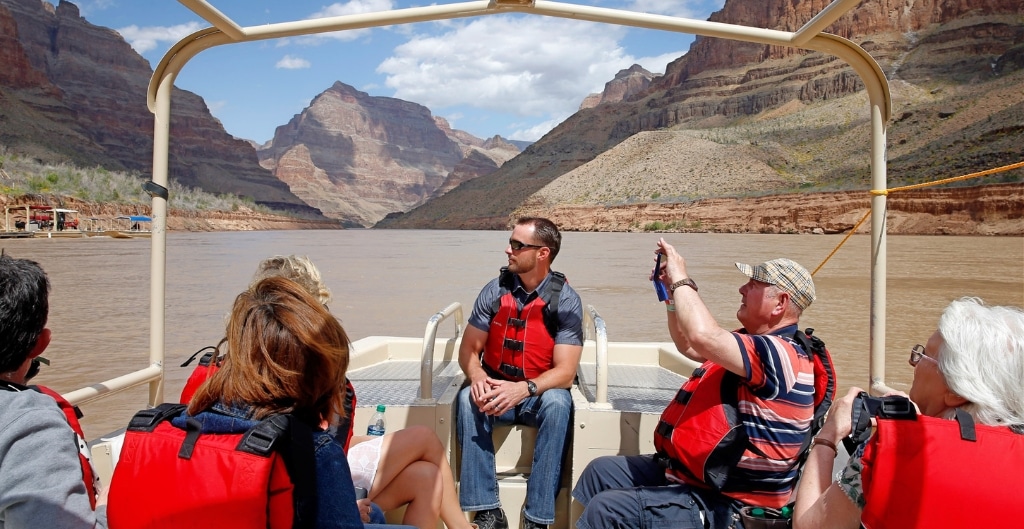
Full canyon trips can last anywhere from several days to two weeks, offering a comprehensive exploration of the Grand Canyon from Lees Ferry to the Grand Wash Cliffs. These trips allow for an immersive experience, with opportunities for side hikes, camping under the stars, and extensive wildlife viewing. Partial trips, which can be as short as a half-day or extend several days, typically cover specific sections of the river, such as the Upper or Lower Canyon. These trips are suitable for those with time constraints or specific areas of interest. Be warned, as oftentimes this means you will be hiking in or out of the Grand Canyon, and that is no small feat.
Guided Trips: Guiding in the Grand Canyon has existed for hundreds of years. The benefits include the expertise of knowledgeable guides who can navigate the rapids, provide historical and geological context, and handle all logistics, including meals and equipment. This is ideal for those seeking a worry-free experience. The challenge might be the higher cost and less personal flexibility. Check out Grand Canyon Whitewater! They are one of the go-to guide companies for rafting.
Self-Guided Trips: These trips offer more autonomy and a sense of adventure, appealing to experienced rafters who prefer a DIY approach. Challenges include the need for thorough preparation, the risks of navigating unfamiliar rapids, and the responsibility for all aspects of trip planning and execution.
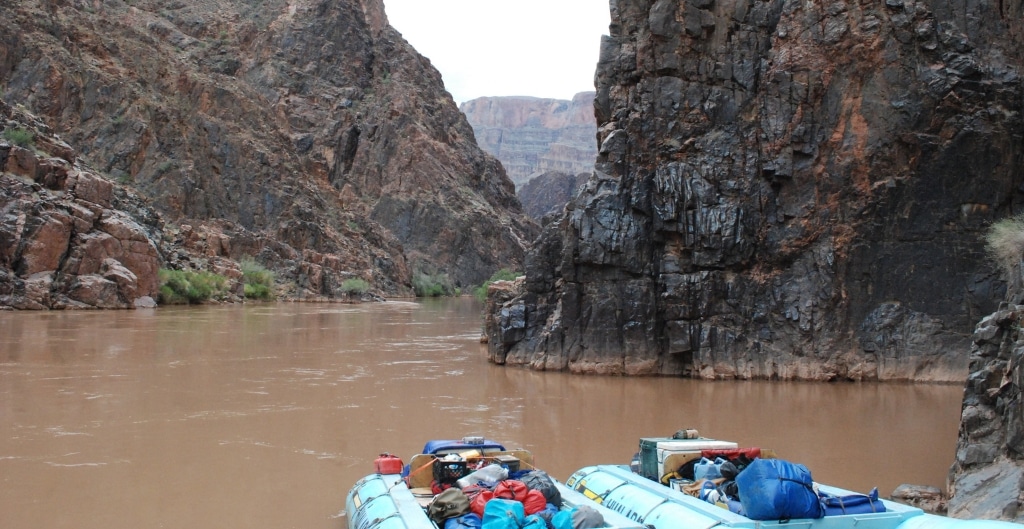
Essential Gear and Clothing:
Packing Tips for a Successful Trip:
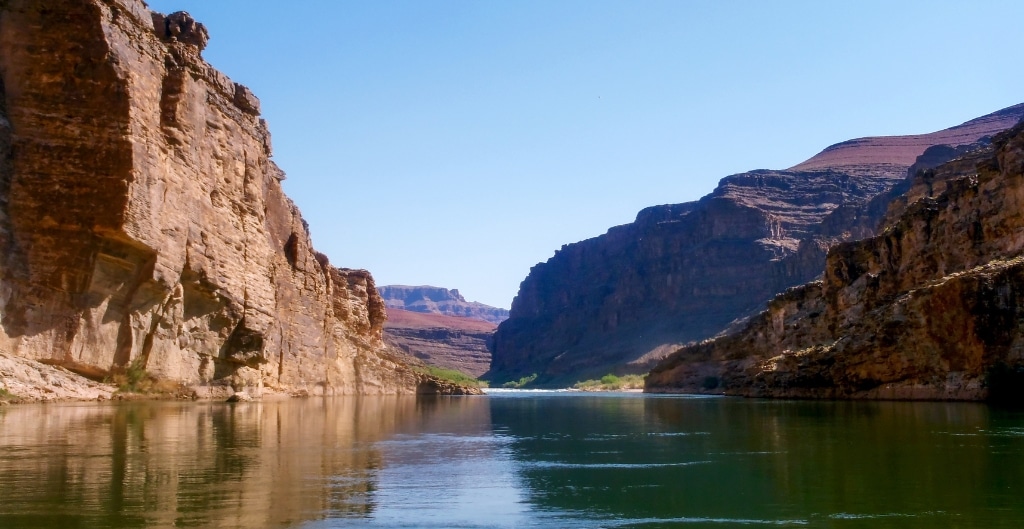
Recommended Fitness or Ability Levels:
Recommended River Knowledge or Skills Required:
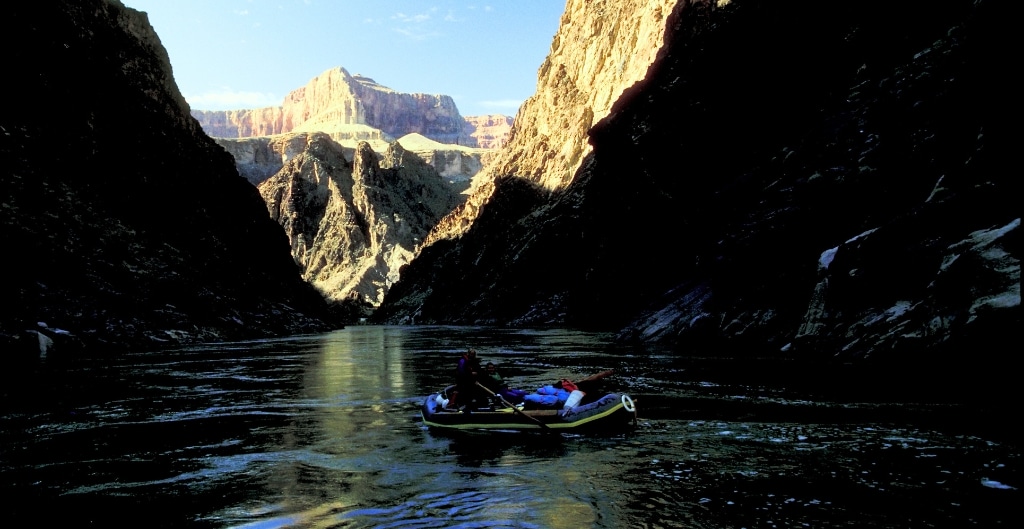
A rafting trip down the Grand Canyon offers a dynamic and exhilarating adventure, featuring breathtaking scenery, challenging rapids, and close encounters with nature. Here’s what you can expect from the moment you set off on the river to when you conclude your journey.
Starting and Ending Points: Rafting trips in the Grand Canyon typically begin at Lees Ferry, the only accessible put-in north of the canyon that is available for commercial and non-commercial river trips. The most common take-out points vary depending on the length of your journey, with popular spots including Diamond Creek, Pearce Ferry, and Lake Mead.
Camping Options for Multi-Day Trips: The National Park Service regulates camping along the Colorado River in the Grand Canyon. Designated camping areas are available at various intervals, providing necessary facilities while minimizing environmental impact. These sites are often situated near side streams or other attractions and provide basic amenities like toilets. It’s important to follow all guidelines and regulations to preserve the integrity of the camping sites.
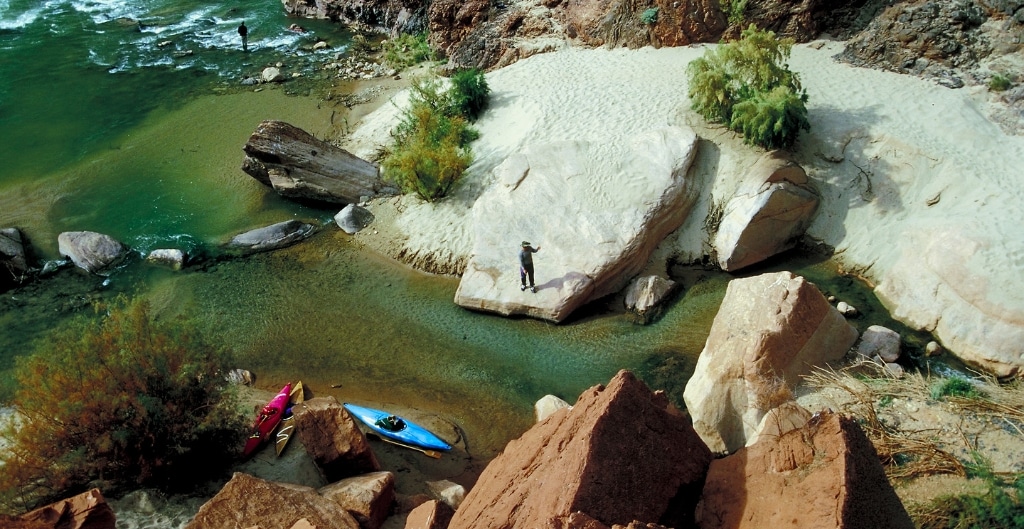
Overview of Major Rapids: The Grand Canyon is home to numerous rapids, ranging from class I to class V. Notable rapids include Hance, Granite, Hermit, and Lava Falls, each known for their unique challenges and thrilling experiences. The difficulty of the rapids can vary significantly with water levels, which are influenced by dam releases upstream.
Safety Tips and Emergency Procedures: Safety is paramount when navigating the rapids of the Grand Canyon. Always wear a life jacket and helmet, listen to your guide’s instructions, and understand basic rescue techniques. In case of an emergency, know the procedures for getting to safety, providing first aid, and signaling for help. Guides are generally well-trained in emergency response and will lead any necessary safety measures.
Common Wildlife Sightings: The Grand Canyon’s diverse ecosystems support a variety of wildlife. Rafters might spot bighorn sheep, mule deer, and a variety of bird species, including the endangered California condor. Less visible but equally present are reptiles and smaller mammals, which make their homes along the riverbanks.
Notable Geological Features and Side Hikes: Beyond its rapids, the Grand Canyon offers world-renowned geological features and numerous side hikes that can enhance your rafting adventure. Noteworthy stops include the Nankoweap Granaries, Havasu Creek, and the Little Colorado River. These sites offer opportunities to explore ancient Native American sites, stunning blue-green waterfalls, and otherworldly calcite mineral deposits.
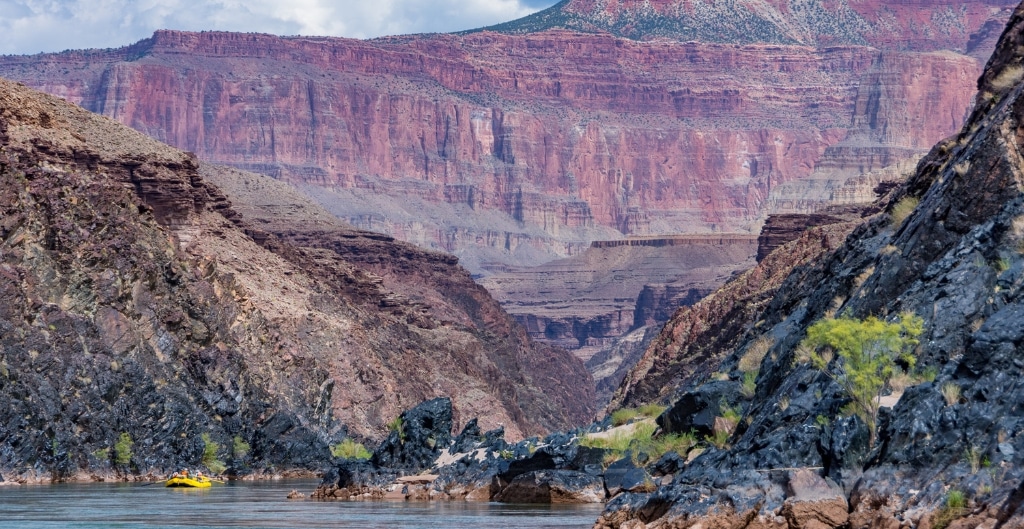
Colorado River rafting in the Grand Canyon offers a profound journey through one of the most iconic landscapes on the planet. To ensure your experience is not only enjoyable but also unforgettable, follow these tips.
Mental Preparation and Embracing the Unexpected: The key to a fulfilling rafting trip is to maintain an open and adaptable mindset. The river and the canyon are dynamic environments where conditions can change rapidly. Prepare mentally for the challenges ahead, whether they are tough rapids, changing weather, or even altering group dynamics. Embracing the unexpected allows you to appreciate the journey as it unfolds, enhancing your connection to the experience.
Connect with Fellow Rafters—Building Camaraderie: One of the most enriching aspects of a rafting expedition is the opportunity to build camaraderie with your fellow adventurers. Shared experiences, especially in a setting as awe-inspiring as the Grand Canyon, naturally foster strong bonds and friendships. Engage with your group, share stories, and support each other through the challenges and joys of the trip. The relationships you build can enhance the enjoyment of your adventure and last a lifetime.
Photography Tips and Documenting Your Journey: Capturing the majestic beauty of the Grand Canyon can be a rewarding aspect of your trip. Here are a few tips for photography on the river:
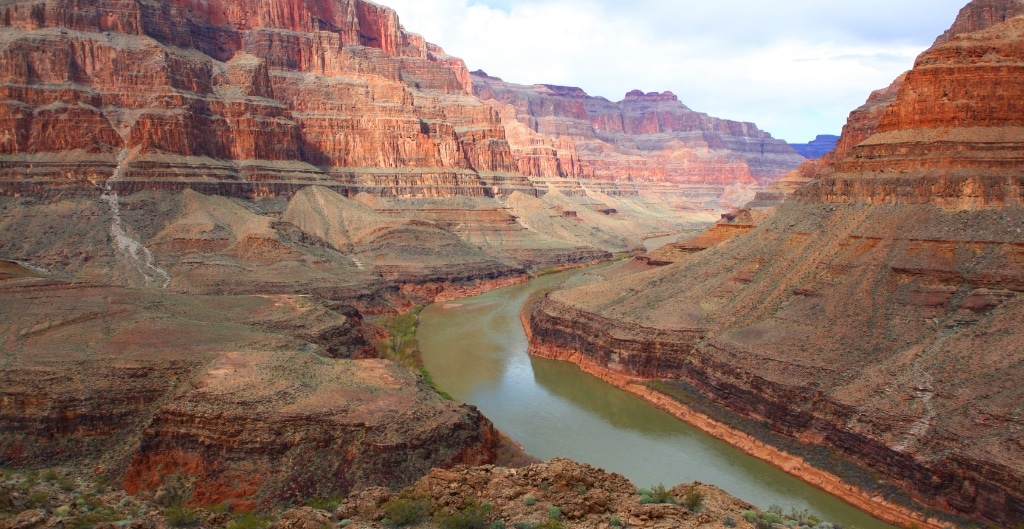
While the thrill of floating the Grand Canyon offers an unmatched experience, it’s just the beginning of what you can explore in this magnificent natural wonder. Grand Canyon Adventures (GCA) provides a variety of tours and activities designed to enhance your understanding and appreciation of the Grand Canyon, catering to different interests and fitness levels.
Whether you’re looking for a rigorous hike down its steep trails, or a leisurely tour filled with geological and cultural insights, GCA has something for everyone. Our expert guides are not only knowledgeable about the Grand Canyon’s vast ecology and rich history, but they are also passionate about sharing this wonder with visitors from around the globe.
GCA’s range of tour options includes guided hiking tours, scenic drives, and photographic expeditions that explore various parts of the Grand Canyon. From the South Rim filled with iconic viewpoints, our Grand Canyon tours are designed to showcase the best the canyon has to offer.
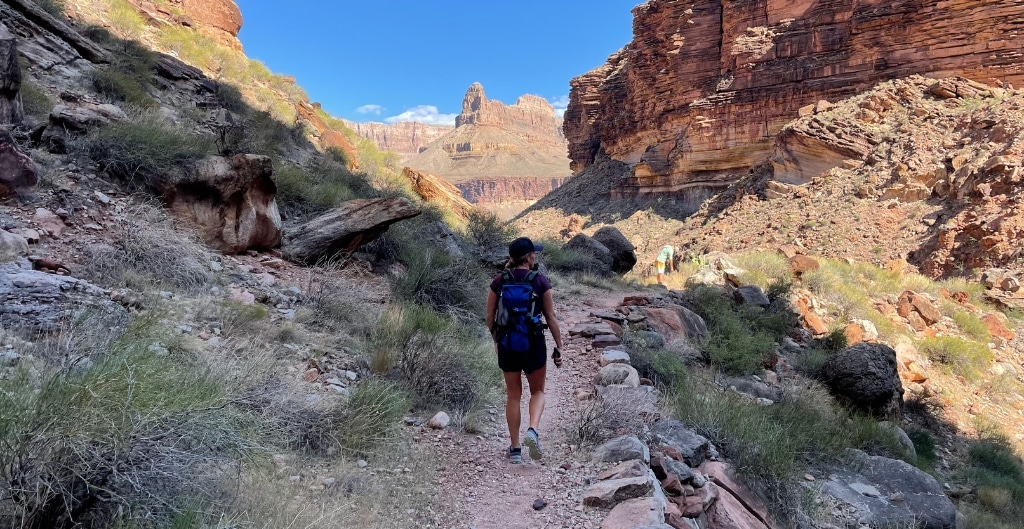
Beyond the visual splendor, each GCA tour is an opportunity to dive deeper into the canyon’s geology, flora, fauna, and the history of its indigenous peoples. These educational components enrich your visit, turning a simple sightseeing trip into a comprehensive learning experience.
Understanding that each visitor has unique interests, GCA offers customized tours tailored to specific desires and needs. Whether you’re a seasoned adventurer looking to tackle the less-traveled paths or a family wanting a comfortable and informative introduction to the canyon, we can personalize your itinerary to ensure an unforgettable experience.
On all of our tours, GCA is committed to sustainability and respect for the Grand Canyon’s natural environment and cultural heritage. We advocate for leave-no-trace principles, aiming to preserve the beauty and integrity of the canyon for future generations.
We invite you to explore more about the Grand Canyon through Grand Canyon Adventures. Every tour is more than just a visit; it’s an immersive experience designed to connect you deeply with one of the world’s most awe-inspiring landscapes. Explore all of our tours or contact us to learn more about how you can make the most of your Grand Canyon experience.
Let Grand Canyon Adventures be your guide to a deeper, more enriching exploration of this iconic destination. Join us, and discover the many layers of history, beauty, and adventure the canyon has to offer!
